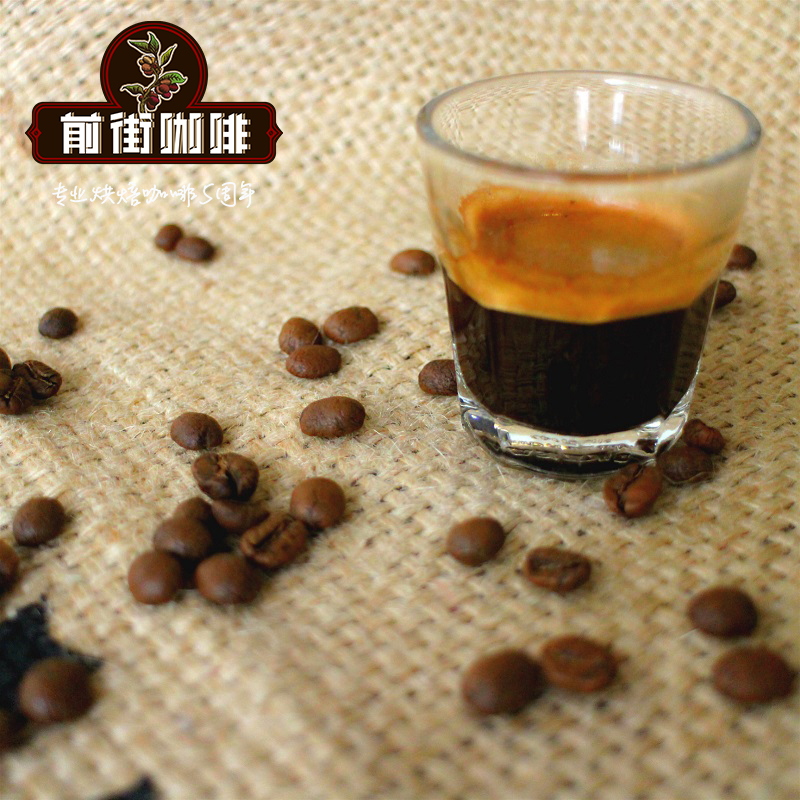How to make espresso? how to drink it? why should it be served with ice water?

Professional coffee knowledge exchange more coffee bean information please follow the coffee workshop (Wechat official account cafe_style)
Espresso (Espresso) is a type of coffee with a strong taste by using hot water at 92 degrees Celsius and 9bar under high pressure to grind it into a very fine coffee powder. It was invented and developed in Italy and began in the early 20th century, but until the mid-1940s, it was a drink made separately through vapor pressure.
In terms of quality, espresso has a thicker texture than drip coffee and contains more dissolved matter per unit volume than drip coffee; supply is usually measured in shot. Espresso is chemically complex and changeable, many of which decompose due to oxidation or a drop in temperature. The proper brewing of espresso is characterized by the presence of coffee fat (Crema), a reddish-brown foam that floats on the surface of espresso. It consists of vegetable oils, proteins and sugars. Coffee fat has the combination of emulsion and foam colloid.
Through the short-time and high-pressure brewing process, the unique flavor of a cup of coffee is stronger than other brewing equipment after being concentrated.
Freshly extracted Italian concentrate, covered with a thick, dense, reddish-brown foam, is called "crema". For a good cup of Italian concentrate, crema accounts for more than 10% of the total volume of coffee, and the stabilization time is more than 2 minutes. Crema is a kind of foam that contains gases such as carbon dioxide (CO2), air, water vapor and volatile aromatic compounds. So, when the bubble bursts gradually, you will feel very fragrant.
In the process of Italian concentrated extraction, a large amount of CO2 in coffee powder is dissolved in water at a brewing pressure higher than 7 atmospheric pressure. When the extract flows out, the sudden drop in pressure leads to the rapid release of dissolved CO2 and other volatile substances, resulting in a large number of small bubbles, which is the basis for the formation of "crema". The stability and persistence of "crema" requires the joint action of fat, protein, polysaccharide and melanoidin (the product at the end of Maillard reaction) in the extract.
1. Generally speaking, the coffee shop produces espresso with a glass of ice water to clean the mouth so that you can better feel the taste of espresso.
two。 By observing the color and state of cream, we can preliminarily judge the technology of making coffee at the bar and the freshness of coffee beans.
3. Equipped with a coffee spoon, usually used as a stirring. In fact, it also has a function, that is, to help check the thickness of oil (cream), the thickness of 3-5mm can be considered qualified.
4. You need to take a sip of espresso, don't swallow it, let it stay in your mouth for a while, like red wine.
5. Drink a sip of water, then drink espresso, drink slowly.
Important Notice :
前街咖啡 FrontStreet Coffee has moved to new addredd:
FrontStreet Coffee Address: 315,Donghua East Road,GuangZhou
Tel:020 38364473
- Prev

How to open a dream cafe? Ask yourself three questions first!
Professional coffee knowledge exchange more coffee bean information please follow the coffee workshop (Wechat official account cafe_style) if you most want to open a shop? The most common answer must be "coffee shop". Once upon a time, cafes have replaced milk tea shops as the first place for many young people to get together or kill time.
- Next

Starbucks shares in technology companies, actively transforming "one-stop service"
Professional coffee knowledge exchange more coffee bean information follow coffee workshop (Wechat official account cafe_style) SBUX-US (Starbucks) said on Monday (22) that it will acquire a stake in a digital technology company to enhance Starbucks to provide online mobile phone ordering services and increase payment methods around the world, and to upgrade Starbucks' digital transformation model again. Starbucks will take a stake
Related
- What documents do you need to go through to open a coffee shop? coffee shop coffee shop certificate processing process
- How to purchase Coffee beans in small Cafe how to choose a suitable supplier for domestic Coffee supply Company
- How to drink Starbucks Fragrance White Coffee? how to make Australian White Coffee? what Italian coffee beans are recommended?
- The Story of Flora Coffee: the name of Flora Coffee Bean and the implication of the Flowers on Florna Coffee
- How much does a cup of coffee cost? How much is the profit of a cup of coffee? What is the profit of the coffee shop in a year?
- Yunnan small Coffee, known as "fragrant Coffee", introduces the characteristics of Alpine Arabica Coffee producing areas in Yunnan, China
- 2023 latest Starbucks full menu price list how much is a cup of Starbucks coffee what is better to drink the most popular hot and cold drinks recommended
- Starbucks different kinds of Coffee Price list Starbucks menu 2023 Top Ten Best drinks in Starbucks
- Starbucks Spring praise Comprehensive matching Coffee Bean theme Story Packaging implication and taste description
- The cost of a cup of coffee latte American coffee cost price and selling price

